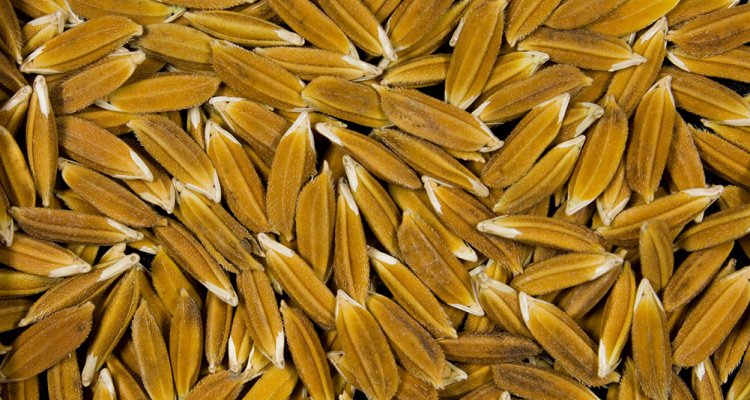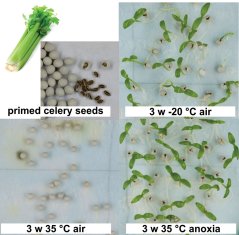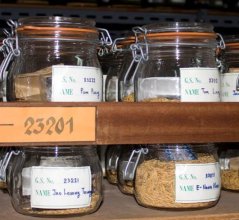
Low oxygen seed storage
Maintaining the quality of seeds as they gradually age in storage is a challenge. Wageningen University & Research has developed a low-cost technology to prolong the shelf life of seeds.
Seeds are used for the production of food and feed. To make them available for agriculture or food processing they have to be produced and stored until use. Most crop seeds can best be stored dry. In general it is advised that seeds should be stored at a relative humidity of 30% or less and at low temperatures, in order to reduce the rate of deterioration. This storage can be rather costly, especially in the tropics. Moreover, as living material the seeds still age, even at low humidity and temperature conditions, resulting in a gradual decline in quality.
Prolonging seed life
Experiments performed by Wageningen University and Research showed that next to low humidity and temperature, anoxia is a third important factor that can be used to prolong the shelf life of seeds, also called seed longevity. The reason is that the type of damage accumulating in the stored seeds is mainly oxidation, stimulated by oxygen in the environment. Early experiments had shown that seeds stored in an oxygen-free environment could survive much better in certain occasions. Seed companies were initially hesitating about applying anoxia, concerned about whether – as living organisms – seeds could survive without oxygen.
Survival of primed seeds

To respond to this issue we performed an experiment with primed celery seeds. Priming is a process where seeds are temporally made wet to initiate the germination processes, then dried before the root protrudes. Primed seeds germinate faster and more uniformly in the field. However, priming can have the disadvantage that it reduces the shelf life of the seeds. This is especially true for primed celery seeds, which may lose their germination capacity after only a few weeks storage at room temperature.
No oxygen: long seed life!
We analysed survival of the seeds after three weeks storage at 35°C, with or without the addition of a desiccant or oxygen absorber. Most primed celery seeds stored without additions did indeed fail to germinate after three weeks at this warm temperature, as did most seeds stored with only a desiccant or oxygen absorber. In contrast, using the combination of a desiccant and an oxygen absorber resulted in a very good seed survival rate.
This experiment confirmed that seeds can survive perfectly well without oxygen when they are in a dry state as respiration is not active under such conditions. Seeds do require oxygen when moist as they are then respiring. Research is ongoing to discover the critical moisture level for anoxia storage.
Improved seed longevity in the tropics

These findings are especially interesting for seed storage in the tropics, where cool storage is expensive. Cooled seed storage is also often impossible because of the high volumes, as with rice, or with seed packages stored at seed shops or with farmers. Anoxia or low oxygen storage can also have advantages in temperate regions for seeds that generally have a short shelf life, such as those from lettuce or onion, or primed seeds.
In addition, anoxia storage can benefit the shelf life of micro-organisms in the seeds or when added to the seeds as biologicals. For instance, there are grass seeds on the market that contain micro-organisms called endophytes, which grow with the seed into the grass plant. As birds may not like to feed on the grass because of the bad taste produced by some endophytes, this makes it ideal for airports and golf courses. Unfortunately the endophytes age faster during storage compared to the grass seeds and at a certain point the seeds will no longer provide grass with endophytes. A solution is to store the grass seeds with endophytes under anoxia conditions, extending their shelf life.
Cost-effective
Dutch seed companies have welcomed the findings and are experimenting with seed storage under low oxygen levels. Drying, cooling, creating and maintaining low oxygen conditions all have their costs. To estimate the relative advantages of storing at reduced oxygen levels a four-year project has been started by Wageningen University & Research, supported by two seed companies and the Dutch government. Results of this long-term storage project are expected to become publicly available in 2019.
Long-term storage

Gene banks store seeds from old varieties and wild crop relatives as genetic heritage for future generations. Since regeneration is costly and runs the risk of reducing genetic variation, it is preferred that the seeds can be stored for decades without loss of viability. Unfortunately many gene banks have to regenerate more often due to overly fast deterioration. One reason for this might be that many gene banks use glass storage jars from which seeds are taken from time to time (the Dutch gene bank does not use this method).

This creates a dilemma for the gene banks: On the one hand, they want to be able to supply seeds on demand, but on the other they prefer to open storage jars as infrequently as possible in order to minimise any deterioration of seed quality. If the oxygen could be removed from seed jars after opening, the seeds would maintain quality much longer. This can be easily and inexpensively done by including a package of oxygen absorbing iron powder in the jar next to the desiccant. An alternative is removing most of the oxygen through vacuum packaging in hermetically sealed foil bags, as performed by for instance the gene banks in the Netherlands and the International Rice Research Institute in the Philippines.
Preserve seed’s own antioxidants
Seeds have a defence system against oxidation as they contain different anti-oxidants. Wheat seeds are the main natural source of vitamin E, the anti-oxidant used in the food industry against lipid oxidation. Because the antioxidants in the seeds can capture the oxygen, a brief period under oxygenated conditions is not a problem. But the anti-oxidant pool is limited and anti-oxidants are not mobile in dry seeds. Once this defence gets locally depleted, the risk of oxidative damage increases at those sites. For gene banks it is therefore worthwhile storing the seeds directly after drying under anoxia conditions – this will limit depletion of the anti-oxidant defence system and extend the potential shelf life as much as possible, reducing the costs of regeneration.
High oxygen to test potential seed longevity
Seed companies are keen to know the effect of seed treatments on shelf life. Presently used fast ageing tests that increase the seed moisture level and storage temperature have a poor correlation with long-term commercial storage. Wageningen University & Research has deployed its knowledge on the effects of oxygen to create an alternative seed ageing test.
The research was funded by the Dutch Ministry of Economic Affairs.